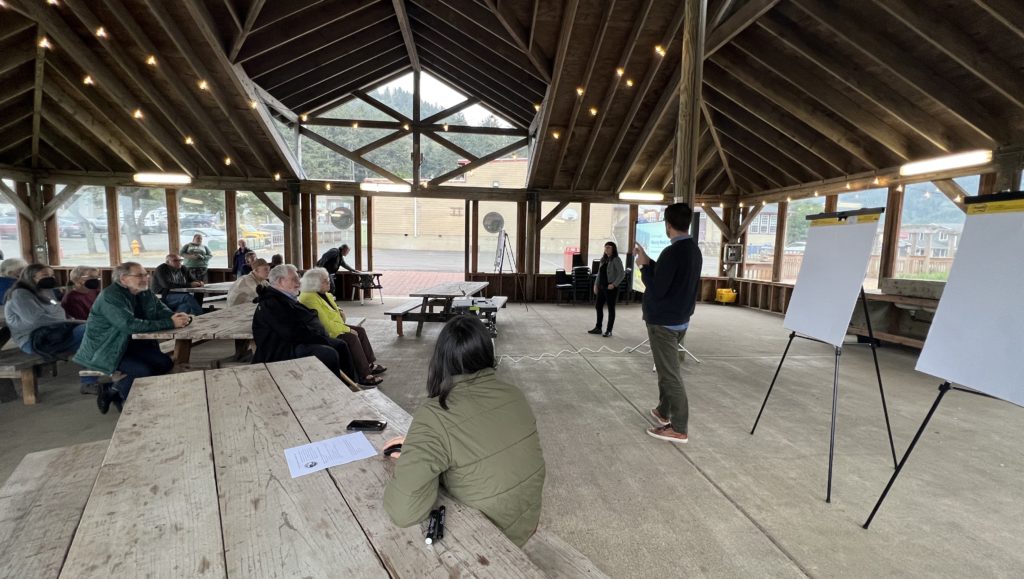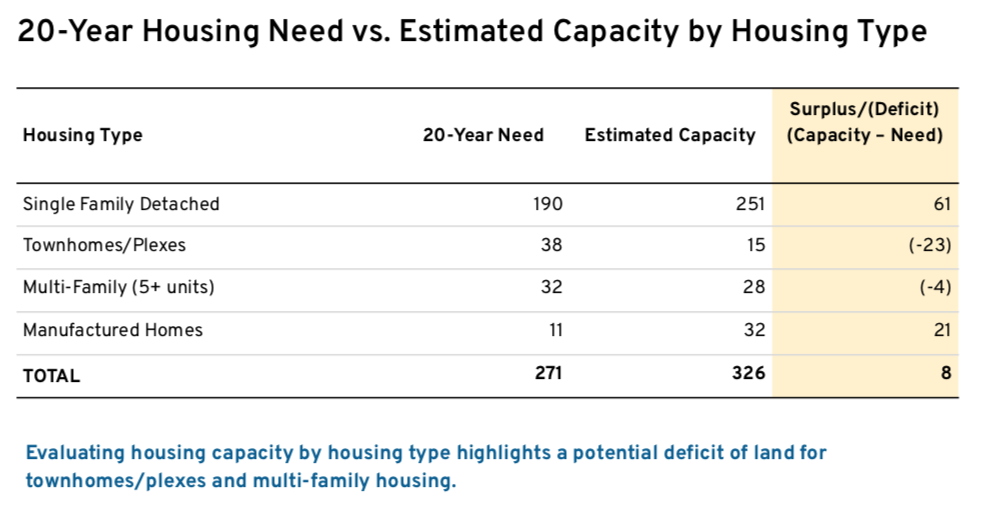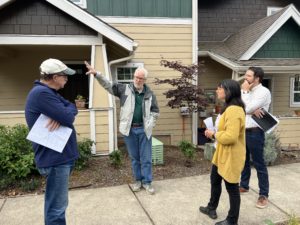
By QUINTON SMITH/YachatsNews.com
YACHATS – The city’s housing stock is dominated by second homes and vacation rentals, there is adequate land for new construction but most of it is restricted to single-family houses, according to an evolving study of housing in Yachats.
The city’s biggest housing need is to encourage more duplexes, townhomes and multi-family projects – but that will require substantial changes to Yachats’ zoning ordinances and could involve some type of subsidy or incentive from the city.
That’s the message from two presentations Tuesday by housing consultants helping Yachats to diversity its types of housing and possibly provide more options for a wider range of residents other than retirees or tourists.
“Many coastal communities are grappling with this same issue,” said Rachel Cotton of Newport, a senior associate with Cascadia Partners, the planning firm helping the city via a state grant. “It’s certainly not unique to Yachats.”
The consultant and the city’s Planning Commission are halfway through the study, which is focusing on what types of housing currently exist, what land is available, how it is zoned, and what types of housing the city likely needs next. That work should be finished in six weeks, Cotton told YachatsNews.
Similar housing studies are going on throughout Oregon towns big and small, including neighboring Waldport, spurred by the state’s housing crisis and funded by state grants.

Among pages of information, some early findings:
- 58 percent of Yachats’ housing consists of second homes or vacation rentals;
- There are 80 acres of buildable land in the city, but most of it is zoned to allow only single-family homes;
- There is a deficit of land available or zoned for duplexes, townhouses or multifamily housing;
- The median Yachats home value is $545,000 – higher than any other city in Lincoln County and the county as a whole, while the average household size is smaller (1.81) than the county or Oregon.
Unlike earlier drafts of the report and presentations to the planning commission, the consultants Tuesday began suggesting ways Yachats could begin working its way out of the housing crunch. Most of it involves changing land zoned R-1 which only allows single-family houses.
“There’s a surplus of land zoned R-1,” said Jamin Kimmell of Cascadia Partners.
Some ideas include:
- Minimum lot sizes required to develop multifamily housing often make these projects unfeasible on existing lots. Reduce the minimum lot size required for duplexes, townhouses and multifamily housing and allow higher densities for multifamily projects;
- Some 60 percent of the city’s available land is zoned R-1 for single-family housing, but there’s less of a need for it. Rezone portions of the city which allow only single-family homes to allow higher density uses;
- All of houses built in multifamily/motel zones (R4) in last 20 years have been single-family. Prevent construction of single-family homes in R-4 zones.
- Allow different types of housing in R-1 zones such as accessory dwelling units (ADUs) or clusters of cottages. Unlike many Oregon cities that have embraced ADUs, Yachats still prohibits them.
There are also financial barriers to diversifying housing. The consultants say the city may have to consider offering incentives such as lowering system development charges or waiving property taxes – as it did with the Fisterra Townhome development – to make some multifamily projects financially feasible. It can also enter partnerships with nonprofits or other housing groups to lure multifamily projects to Yachats.
Kimmell said reducing system development charges “is a powerful tool to reduce upfront development costs” or to help target specific types of housing.
The city, which is in strong financial shape from steady tourism taxes and federal stimulus funds, could also help acquire land to give to developers, nonprofits or land trusts.
“Land is often the largest cost of development,” Kimmell said. “You can return those properties to more productive use.”
Implementation plan next spring

The consultants are still gathering information and conducting a community survey to collect comments, Cotton said. The survey is designed, she said, “to see if we are on the right track and if there is support for some of the ideas.”
The survey closes Oct. 14. In just two days this week, there were 75 responses from residents.
But once the study is completed this fall, Cotton, Kimmell and the Planning Commission don’t intend to let it gather dust on some city hall shelf.
The issue with many small cities, Cotton said, is they lack staffing or expertise to wade through all the details in zoning law to implement many of the changes the commission or council may consider.
Early next year and through the spring, Cascade Partners will work on plans to enact various scenarios. That means settling on acceptable changes and strategies, examining current city codes and then suggesting ways they could be revised – should the commission and council want to make them.
“Our goal is to deliver something that can be implemented by the city,” Cotton told YachatsNews. “We feel strongly that we want to get the city as close to implementing these as possible.”
To read the consultants draft housing report, go here
To take the community housing survey, go here



